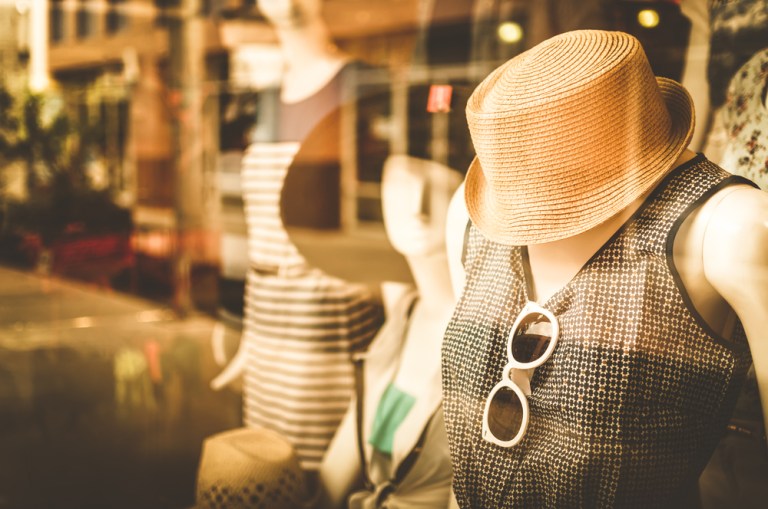
To some, shopping online for clothes is a chore. To others, it’s fun. But how often does it feel like a game? Probably not very often, considering that around one quarter of online apparel purchases end up getting returned. That sounds less like fun and more like friction and frustration.
Even customers who enjoy online shopping can have a hard time judging whether an article of clothing will flatter them, due to either its fit or color. Sizing can be inconsistent even within the same brand, let alone from one company to the next.
Sometimes, the package that arrives in the mail isn’t even close to the right size. Other times, the product is as described, but just doesn’t flatter the customer’s body type the way it did on the model in the photos. There really is no replacement for trying something on oneself.
Or is there?
One artificial intelligence (AI) and mobile gaming company, Trendage, is trying to make this experience more fun and less frustrating by gamifying it. Co-founder Vineet Chaudhary explained how letting customers play with fashion can lead to more items ordered, fewer returns and troves of customer data that lets retailers target individual consumers by their tastes and body types.
A Combination of Techs
Many retailers are leveraging emerging technologies – such as AI, visual search and recommendation engines – to harvest more data and improve the customer experience.
Through its lesser-known Echo Look device, Amazon connects would-be fashionistas to in-house style experts for advice on what to wear and what to buy. The eCommerce giant has just partnered with Vogue and GQ to add fashion recommendations – some of them shoppable – into Look’s companion app.
Others are pulling inspiration from social media influencers and translating them into fast fashion trends, which are quickly produced and brought to market.
However, few are bringing all of these technologies together to build a totally different customer experience. Chaudhary believes that combining AI, visual search and crowdsourced fashion expertise, as Trendage is doing, can make online clothes shopping a more satisfying and successful experience overall.
Playing the Game
Today, Trendage offers a simple mix-and-match game. The platform’s AI immediately starts learning about the customer’s tastes with a style challenge that asks her to put together an outfit for a work conference or a wedding.
Customers never have to fill out a survey indicating what they like and don’t like, said Chaudhary, as such surveys introduce too much friction while revealing little about the customer.
“A lot of people don’t know themselves that well,” Chaudhary said. “And over time, our styles change.”
Chaudhary said the game’s popularity showed the company how much engagement a game can generate compared to a pure shopping app. People, he noted, buy clothes online a few times a month, or maybe a couple times a week if they’re big e-shoppers – but they play games on their phones every day.
In a few weeks, Trendage will launch customizable avatars, which Chaudhary said will make the shopping experience more personal and fun. Customers will start with a selfie, which will be rendered into an advanced Bitmoji-type avatar that can virtually try on clothes for them.
By entering measurements, from height and weight to hips, waist and chest sizes, customers can create very specific avatars that demonstrate how products will actually look on their body types. Chaudhary said customers are typically willing to share this closely-guarded personal information because they see they’re getting something out of it.
What’s In It for Retailers
Retailers have two main goals, Chaudhary said: increasing conversions and boosting order value. “Complete the look” recommendations can help achieve both, he noted.
Shoppers are free to play with outfits, trying them on as they would in a real dressing room, Chaudhary said. But if they need help pairing an item, the system is ready with recommendations to complete the outfit – a capability that Chaudhary noted only 13 percent of the top 300 clothing retailers offer.
In Trendage’s case, the recommendations are crowdsourced based on what others have bought with the item. It’s similar to how Amazon would suggest that a smartphone buyer also purchase a charging cable and protective case, Chaudhary said – but much less obvious and intuitive, because fashion is so subjective and changes so quickly.
If, for instance, a shopper has found a grey shirt she likes, she can see that 129 other shoppers matched it with a pair of floral shorts – a strong indication that these items pair well together. That’s an upselling opportunity that retailers without a “complete the look” function can’t leverage, Chaudhary noted.
If the shopper leaves the site, instead of being followed around the internet by a targeted ad for the same blue shirt she already liked and bought, the retailer can retarget her with other items that would match the blue shirt, inviting that customer to become a repeat buyer with the brand.
Customers can share images of outfits they like with friends, which Chaudhary said moves them forward in the purchase cycle.
Finally, once they’ve committed to the purchase, Chaudhary believes that Trendage’s tech has the power to cut that return rate to as low as 15 percent, purely by giving customers the personalized information they need to make the right decision the first time.
However, he doesn’t think the return rate will ever drop to the single digits.
“No matter how cool the games are,” said Chaudhary, “at the end of the day, you have to put the clothes on yourself.”